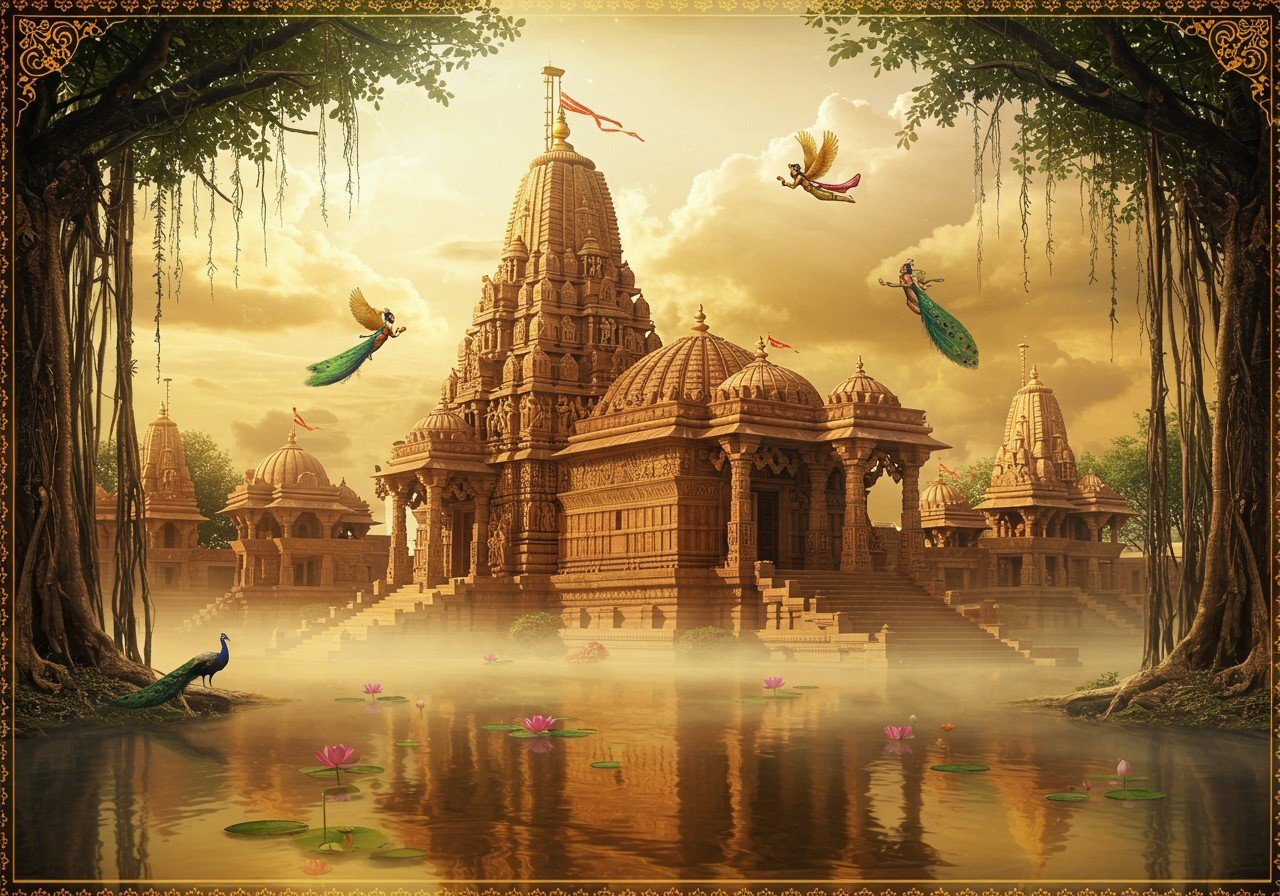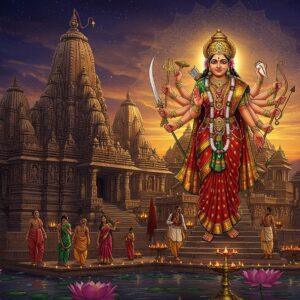
Hindu temple architecture, a timeless testament to India’s rich cultural and spiritual heritage, stands as a captivating blend of art, science, and devotion. These sacred spaces aren’t merely structures; they are intricate reflections of cosmic beliefs, embodying the harmony between humanity and the divine. From the towering shikharas of the north to the majestic gopurams of the south, each element of a Hindu temple tells a story, whispering secrets of ancient traditions and beliefs. This exploration delves into the heart of these architectural marvels, unraveling their symbolism and significance.
The Architectural Styles of Hindu Temples
Across the diverse landscape of India, Hindu temples manifest in a captivating array of architectural styles. Three primary classifications capture this diversity: Nagara, Dravida, and Vesara.
- Nagara Style (Northern Style): Predominantly found in northern and eastern India, the Nagara style is distinguished by its curvilinear shikharas that rise gracefully over the garbhagriha, the sanctum sanctorum. These temples often stand upon elevated stone platforms, emphasizing their connection to the heavens. Many Nagara temples showcase a square base with projections, lending them a cruciform appearance. Explore the Nagara style in detail in our guide here.
- Dravida Style (Southern Style): Emerging in South India during the Pallava dynasty around the 4th century CE, Dravida temples feature pyramidal towers known as vimanas. Crafted from enduring materials like sandstone, soapstone, and granite, these temples often boast elaborate gopurams, monumental entrance gateways that adorn the surrounding walls. Learn more about Dravidian architecture in our detailed guide here.
- Vesara Style (Mixed Style): A harmonious fusion of Nagara and Dravida influences, the Vesara style flourished between the 7th and 13th centuries CE, primarily in the Deccan region. The shikhara in Vesara temples retains a pyramidal form but distinguishes itself from the Dravida style by its smoother, less stepped profile. This style beautifully illustrates the cultural exchange between northern and southern India.
Key Elements of a Hindu Temple
Every element within a Hindu temple holds symbolic meaning, meticulously designed to create a sacred microcosm of the universe. Let’s explore some of these essential components:
- Garbhagriha: The heart of the temple, the garbhagriha is the inner sanctum where the primary deity resides. This sacred chamber is the focal point of devotion, symbolizing the meeting point of the earthly and divine realms.
- Shikhara/Vimana: The towering structure above the garbhagriha is known as the shikhara in North India and the vimana in South India. These soaring structures symbolize Mount Meru, the mythical abode of the gods, and act as a conduit between the heavens and earth.
- Mandapa: The mandapa is a pillared hall designed for congregational gatherings, serving as a space for religious discourses, ceremonies, and community interaction.
- Antarala: The antarala is a transitional space connecting the garbhagriha and the mandapa, signifying the passage from the mundane to the sacred.
- Parikrama: The parikrama is a circumambulatory path that encircles the garbhagriha, allowing devotees to perform ritual circumambulation as a gesture of reverence.
- Dwarpalakas (Dravidian Style): Standing guard at the main entrance of Dravidian temples, the dwarpalakas are twin guardian figures, symbolizing protection and the threshold between the sacred and profane.
- Gosthams (Dravidian Style): Intricate carvings adorning the niches outside the garbhagriha in Dravidian temples, the gosthams often depict deities and mythological narratives.
Delving deeper into traditional Hindu architecture, our guide on “Key Elements of Traditional Hindu Architecture: A Complete Guide” offers further insights. To explore how tradition meets modern design in Hindu architecture, read our blog post here.
Poojn.in: Bringing the Sacred Home
At Poojn.in, we understand the deep significance of Hindu rituals and their connection to temple architecture. We offer a curated collection of authentic puja items, crafted with reverence and attention to detail, to help you create a sacred space within your home.
- Temple Bells (Ghanta): Our traditional brass bells resonate with the same sacred sounds that fill ancient temples, enhancing the spiritual atmosphere of your home puja.
- Deepak and Diyas: Illuminate your puja space with the warm glow of ceremonial lamps, echoing the lighting traditions of temples. We offer a variety of diyas and deepaks made from brass and copper.
- Also you can find other materials to help create a similar atmosphere to your home.
- Kalash Sets: Conduct traditional water rituals and abhishekams with our complete kalash sets, designed to uphold the sanctity of your home worship.
- Puja Thali Sets: Our carefully curated puja thali sets provide all the essential items for temple-style worship, ensuring convenience without compromising tradition. Shop our collection today.
- Each thali comes with all you may need.
- Pure Copper Items: Maintain the purity of your sacred water and offerings with our range of temple-grade copper vessels and containers. View our copper collection here.
- We offer a variety of copper items for all your needs.
For temple visits, our ready-made puja kits contain everything you need, from flowers and coconuts to other traditional offerings. These kits simplify temple visits while ensuring proper adherence to rituals. Explore our Diwali Puja Guide. and Ganesh Chaturthi guide for at home for more at-home puja needs and product recommendations.
Visit www.poojn.in to discover our complete collection of temple worship items. Each product comes with detailed instructions to guide you in maintaining authentic temple traditions at home.
Preserving Our Sacred Heritage
India’s Hindu temple architecture is a vibrant tapestry woven with threads of art, spirituality, and cultural identity. Each temple, a unique narrative etched in stone, beckons us to explore a world where the divine and the earthly intertwine. As we traverse their hallowed halls, admire their intricate carvings, and experience the tranquility of their sanctums, we connect with the profound wisdom of generations past. These temples are not mere relics of antiquity; they are living embodiments of faith and community, reminding us of the enduring values that guide us and the harmonious balance with nature they represent. Explore the Hatimura Durga Temple, a celebration of the divine feminine.
In our rapidly evolving world, these sacred spaces offer a steadfast anchor, gracefully blending time-honored traditions with the realities of modern life. As we cherish these architectural wonders, we honor our rich heritage and embrace the responsibility of preserving these sacred spaces for generations to come. With reverence and respect, we carry within us the stories they tell and the divinity they embody, ensuring that their legacy endures through time. Explore our blog on Hindu Temple Architecture for a deeper understanding of these sacred spaces.


